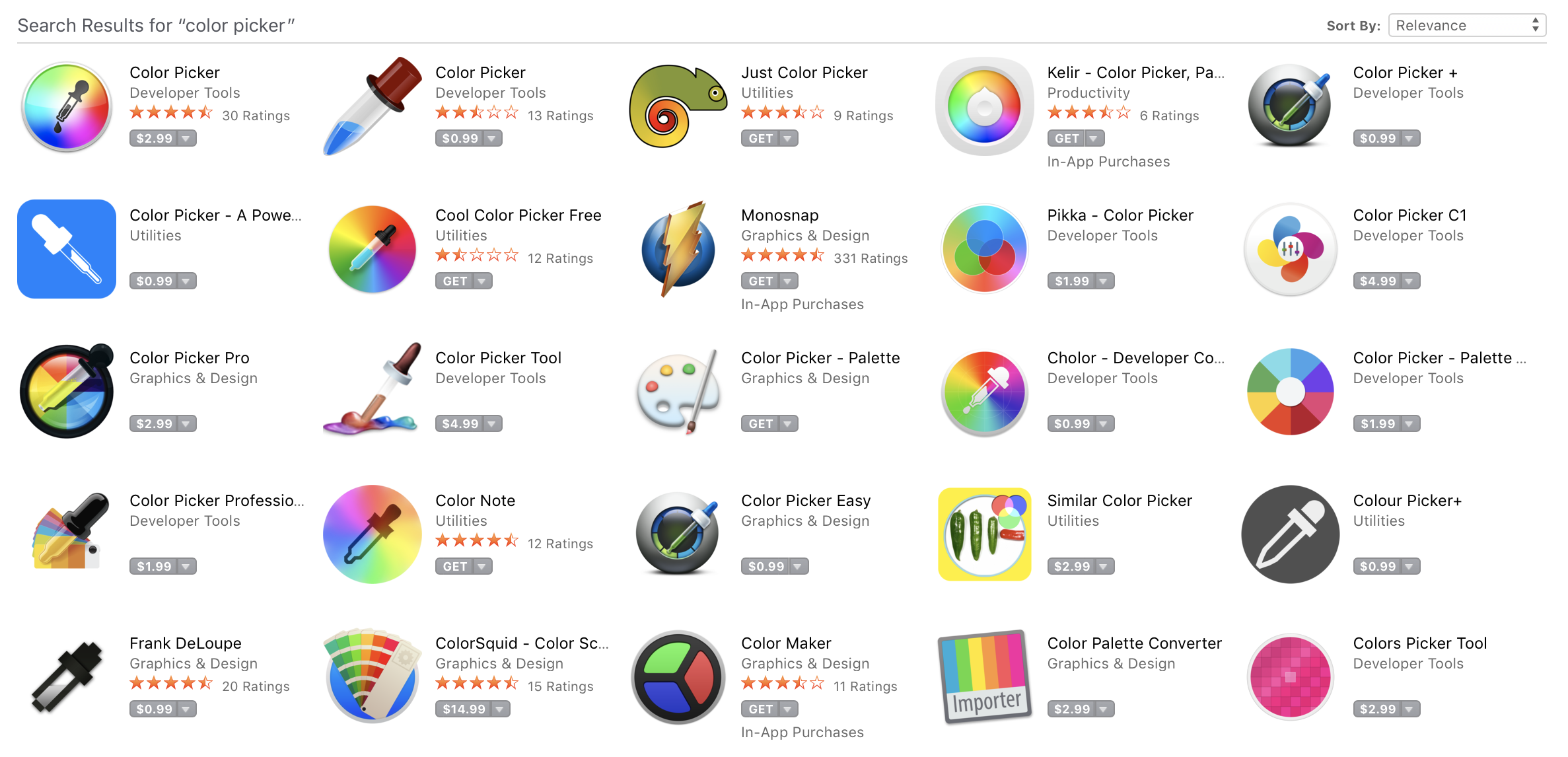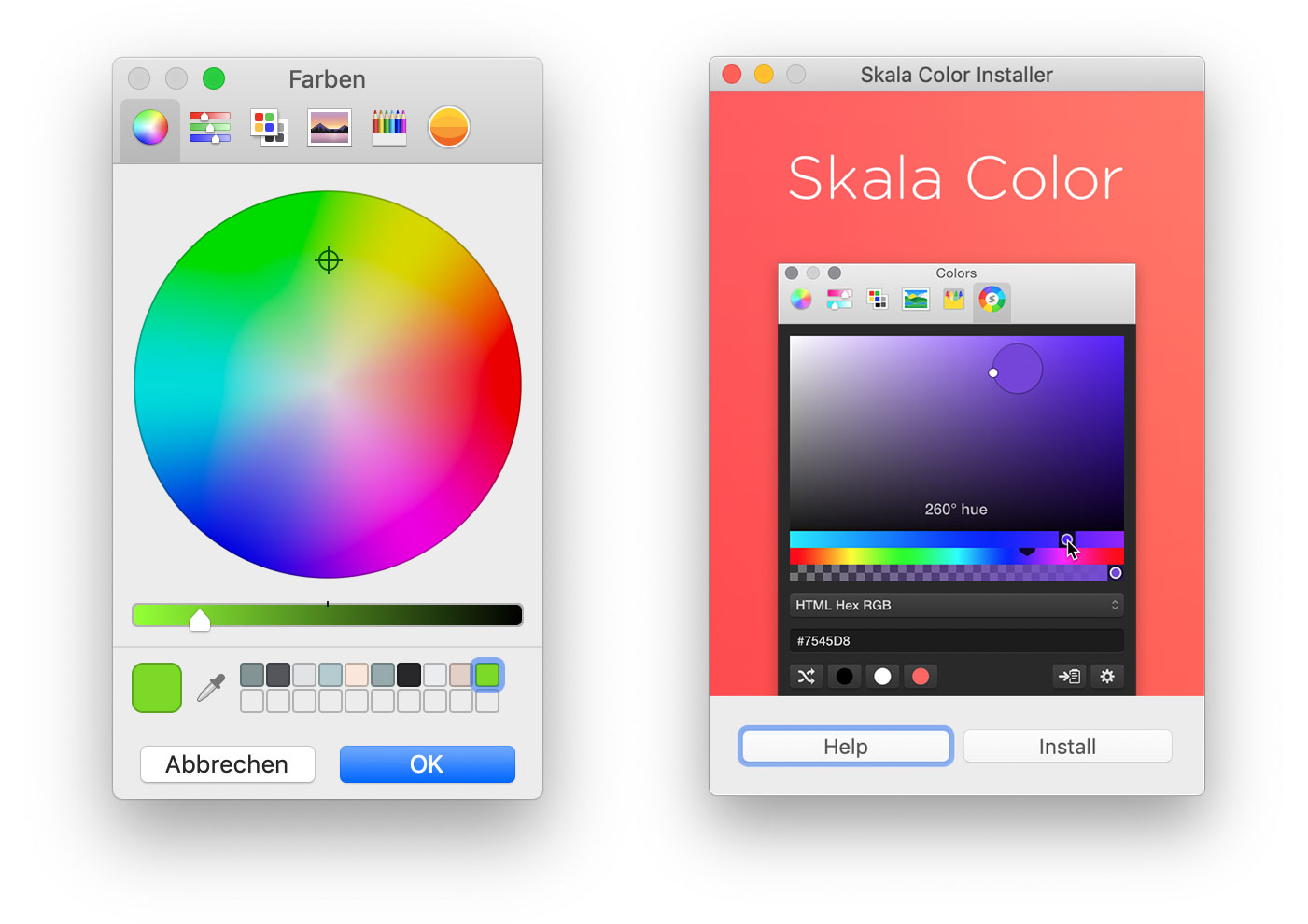

#MACOS COLOR PICKER UPDATE#
The MacOS 10.13.2 update introduced a new problem, making it impossible to click on the custom colors. Problem: It is not possible to choose custom colors To bring back the toolbar, click the button in the upper right of the dialog, shown with a red arrow. Without that toolbar, you seem to be stuck and can only choose colors in one way. You may see the Color Picker without the toolbar on top. Problem: Toolbar buttons missing (Snow Leopard or earlier) The Mac color picker also lets you enter colors as HSB (Hue, Saturation, and Brightness), which is similar but distinct from the HSL (Hue, Saturation, Luminosity) used by Windows.To add new colors to the custom color palette at the bottom of the dialog, drag a color down from the large swatch on top of the dialog (light blue in the example) and drop onto one of the custom color boxes.You don't need to click OK or close the Color Picker dialog. Once you choose a color in the color picker, you'll also see it in the Prism dialog.See below for adding colors to this palette. The custom colors at the very bottom of the dialog offer a seventh way to choose a color.With OSX 10.10 Yosemite, the magnifying glass has been moved to the bottom fo the color picker. The magnifying glass icon gives you a sixth way to choose colors, by matching a color elsewhere on your screen.The example below shows choosing a crayon, but the buttons above let you also use a color wheel, color sliders (to enter RGB or CMYK), or choosing from a color palette. The toolbar at the top lets you choose one of five different approaches to choosing a color.When you choose any color in Prism mac, you use the standard OSX color picker. The Alpha on colors are produced by adding white to the color you have chosen and due to that action, the color goes from the original to nearly white.This page is for Prism Mac. The Value on colors are produced by adding black to the color you have chosen and due to that action, the color goes from the original to nearly black. The Saturations on colors are produced by adding gray to the color you have chosen and due to that action, the color goes from the original to nearly gray. Its could be very useful for web design and for matching colors. Saturation, Value and Alpha are created by adding black, white and gray to the chosen color. There are harmonies of six colors in which, in addition to the 4 colors, chromatic chiaroscuro enters, there are buildings constructed with these patterns. The tetrads are combinations of chords of four colors, not to be confused with using two complementary pairs (here an angle of 90º) is more complicated to work with them in color correction. The harmony would originate form the yellow, red and blue, the basic. They are color harmonies that work with 120º angles in the chromatic circle to join 3 colors, they are stable and complementary colors. It does not exist in color to subtract color or remove a color, its complementary is added to neutralize that color.Ĭomplementaries split instead of choosing complementary colors or double contraries choose the two adjacent colors of the chosen color, do not completely cancel the opposite color, you leave a predominant tone. There are more or less saturated colors that need more of their counterpart in certain shades, this would be basic, although as a general rule you have to use it in the same amount.

Some 180º in a straight line is always the color that neutralizes that unwanted color. The complementary is responsible for neutralizing its opponent if you want to balance a clip. Using two or more monochromatic colors will achieve an elegant and pleasant effect. For example, paint samples have several different values of the same color. The monochromatic colors are those that have the same dye, but differ in hue, value and saturation. The chosen color and its two colors next to both sides, are the colors that predominate in nature and always work well. The analogous colors are next in the color wheel. The Color Harmonies are the combinations in which use modulations of the same hue, or also of different nuances, but that maintain a certain relationship with the chosen colors.


 0 kommentar(er)
0 kommentar(er)
